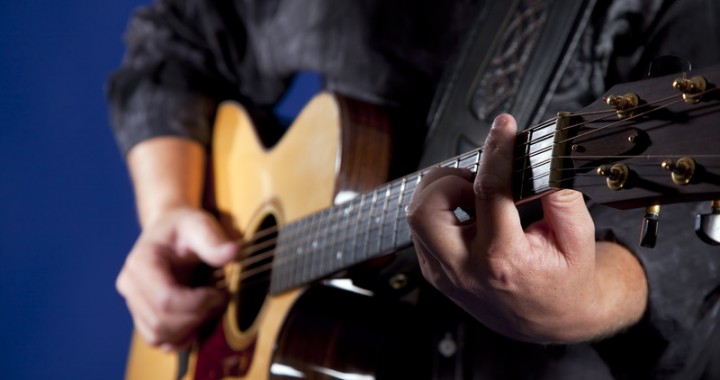It can sometimes be an exciting aspect of music, when the chorus dramatically changes the mood that’s been set up by the verse. A good classic example is The Beatles’ “Lucy in the Sky With Diamonds,” which uses a dreamy psychedelic verse, followed by a much stronger, quicker chorus.
But those songs are the exception. Most of the time, you’ll want your verse to set the stage for your chorus. One of the elements of music that needs to do this is the chord progression. How do you pair up a verse and chorus progression?
 “The Essential Secrets of Songwriting” eBook Bundle packages will take your songwriting further than you’ve ever taken it before. The Deluxe Bundle is ON SALE right now! Read more..
“The Essential Secrets of Songwriting” eBook Bundle packages will take your songwriting further than you’ve ever taken it before. The Deluxe Bundle is ON SALE right now! Read more..
These days in the world of pop music, it’s becoming more and more common to use the same progression in the chorus as in the verse. But if you’re looking for solid progression pairs, here’s a few you can experiment with. They should work in practically any genre, at any tempo, and in any time signature.
Progression 1
VERSE
C Am Bb F C Am Bb F| //// //// //// //// //// //// //// //// Dm Em F G Dm Em F G //// //// //// //// //// //// //// ////
CHORUS
C F Am G C F Am G //// //// //// //// //// //// //// //// Am F Dm G C F Am G //// //// //// //// //// //// //// ////
Progression 2
VERSE
Bb C Bb C (repeat as needed) //// //// //// ////
CHORUS
Dm G C Dm G C // // //// // // //// Am Dm G Am F G C (repeat as needed) // // // // // // ////
Progression 3
VERSE
Am Em G Dm Am Em G Dm //// //// //// //// //// //// //// //// Am Em F C F D G //// //// //// //// //// //// //// ////
CHORUS
C G F C C G F C //// //// //// //// //// //// //// //// Am Em F G C G F C //// //// //// //// //// //// //// ////
Progression 4
VERSE
Em G Am F Em G Am F //// //// //// //// //// //// //// //// Em Dm F C Dm Bb F G //// //// //// //// //// //// //// ////
CHORUS
Am F C G Am F C G //// //// //// //// //// //// //// //// Am Bb F G C F G C //// //// //// //// //// //// //// ////
It’s hard to say specifically what makes two progressions sound like a good pairing. In the ones above, you’ll notice that the choruses often feature adjacent chords whose roots are a 4th or 5th apart, like C to F or C to G. That strengthens a progression structurally, and makes it a good partner to the verse.
Progression 3 shows a common trait of using mainly minor-sounding progressions in the verse, switching to mainly major for a chorus. Progression 4, though in C major, shows how both the verse and chorus can start in minor, but ultimately sound like C major.
 Written by Gary Ewer. Follow Gary on Twitter
Written by Gary Ewer. Follow Gary on Twitter











Yes That’s probably why many of today’s Pop Songs fade very
quickly from the memory, re using the same chord sequence
in the chorus
Its always a good idea to save a few different chords for the chorus
that is why I tend to modulate I love the way I’ll Stand By You
sung by Chrissie Hind does a few modulations it’s a Classic song
Yes, I agree Peter. To my ears, when I hear a chord progression change from what’s been given in the verse, I feel that I’m experiencing a musical journey.
-G